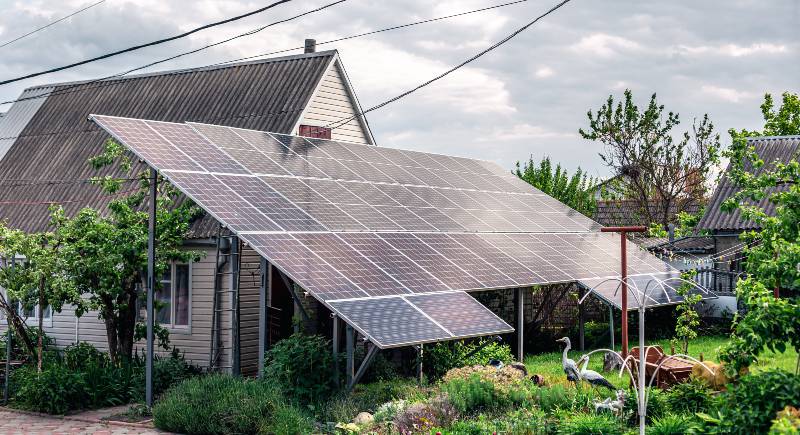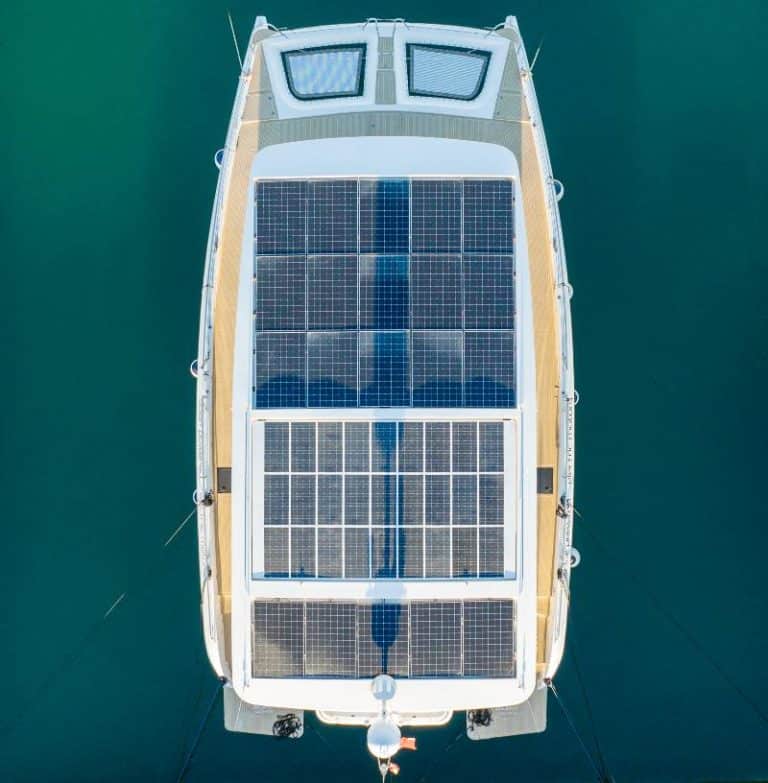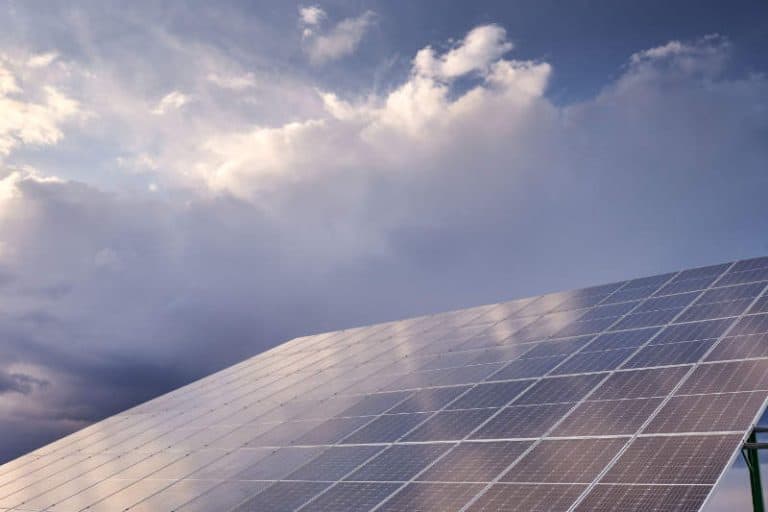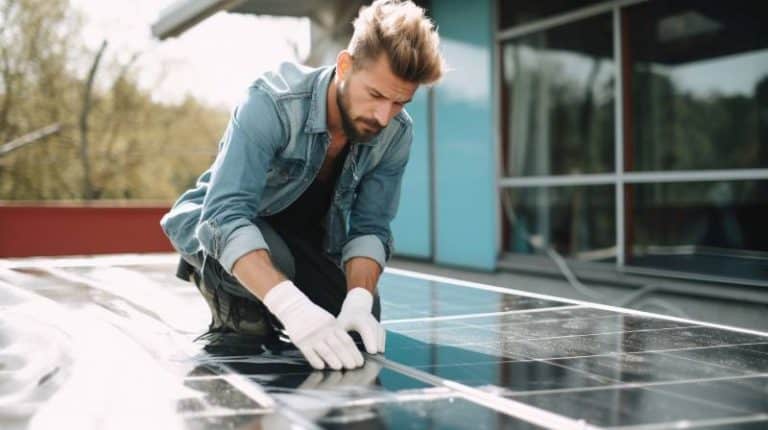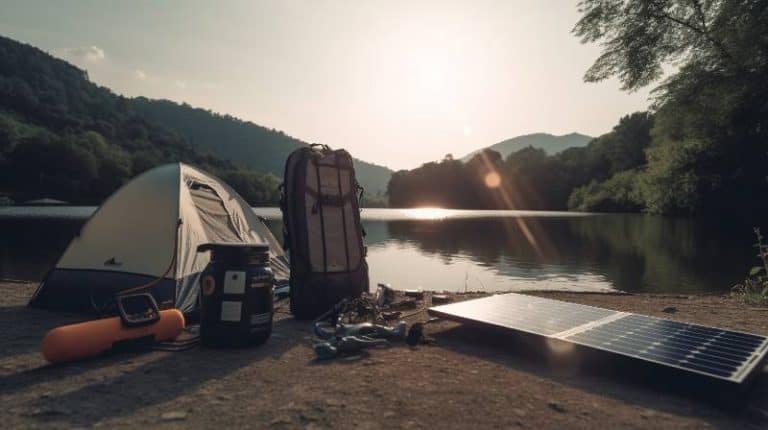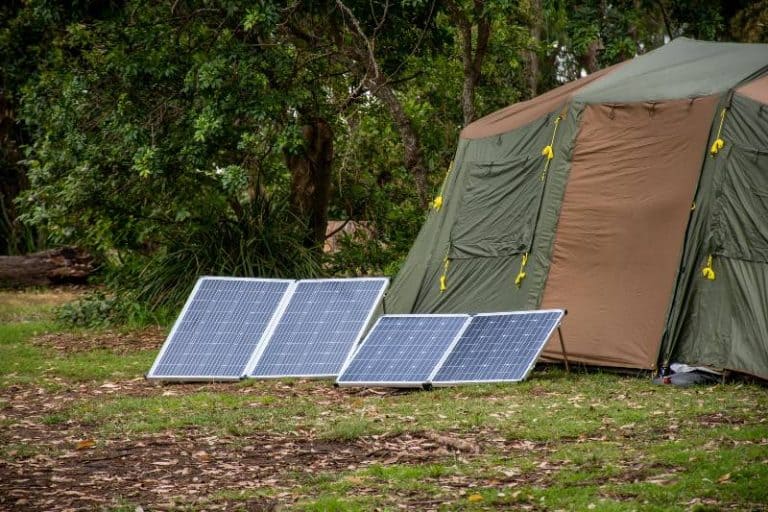Tiny Home, Big Savings: Why Solar Panels Are Key
Are you thinking of going off-grid and living a more sustainable lifestyle? Or maybe you’re just keen to reduce your carbon footprint? Solar panels might be the perfect addition to your tiny home. There are so many great benefits to having a solar energy system, which we’ll discuss in this blog post. We’ll explore how solar panels can help keep your electricity costs down, increase the value of your tiny house, and make life much more convenient for anyone who lives in a tiny home on their own or with family members. So if you want to live sustainably while reducing bills and enjoying convenience – keep reading!
Solar panels for tiny homes provide efficient, eco-friendly energy. They’re compact, harness sunlight for electricity, reduce carbon footprint, and save on utility costs. Ideal for off-grid living or reducing reliance on traditional power sources. Affordable and sustainable energy solution.
Key Takeaways
- Solar panels can be an effective and sustainable solution for powering tiny homes, offering both financial savings and a reduced carbon footprint.
- Selecting the right type of solar panels for your tiny home is crucial and depends on various factors such as available space, budget, and energy needs.
- While solar panel installation can be a significant upfront investment, the long-term benefits in energy savings and environmental impact are substantial.
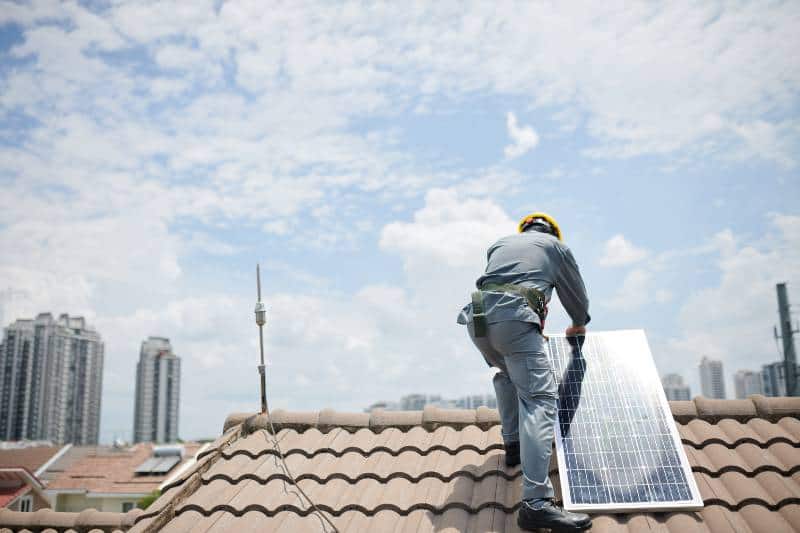
The Basics of Solar Energy
How Solar Panels Work
Solar panels are an incredible innovation in the field of sustainable energy, providing a renewable source of power by harnessing sunlight’s energy. Here is a simplified breakdown of how these solar power systems work.
Solar panels, technically referred to as photovoltaic panels, primarily comprise several solar cells made of silicon, a semiconductor material. These cells are designed in such a way that they contain a positive layer and a negative layer, which together create an electric field, much like in a battery.
When sunlight, composed of tiny packets of energy called photons, strikes the surface of a solar cell, it energizes the electrons in the silicon. This energy helps electrons break free from their atoms and move toward the electric field created by the positive and negative layers. This flow of electrons is what we commonly refer to as electricity.
This electricity, however, is in the form of direct current (DC), which is not typically usable in most homes and businesses. Therefore, an important device called an inverter is used. The inverter’s job is to convert this DC electricity into alternating current (AC) electricity, which is what most appliances and systems use.
In a residential context, for example, once the inverter has converted the electricity, it’s directed into the home’s electrical panel and distributed to various appliances. When more solar energy is generated than the home requires, excess power can be sent back to the grid (if the system is grid-tied) or stored in batteries for later use (in a grid-interactive or off-grid system).
Why Solar Panels for Tiny Homes
Benefits of Solar Energy
The benefits of solar energy are manifold, not only contributing to a more sustainable planet but also offering a host of economic benefits to users.
- Renewable and Sustainable: Unlike fossil fuels which are finite and damaging to the environment, solar energy is a renewable resource. The sun rises every day, providing an abundant and consistent source of power that doesn’t deplete the earth’s natural resources.
- Reduction in Energy Bills: Solar panels can generate a substantial amount of electricity, especially in areas with high sunlight exposure. This means that households and businesses can offset their energy consumption from the grid, thus reducing their monthly electricity bills. In some areas, if you generate more power than you consume, you might even be able to sell the excess power back to the grid.
- Low Maintenance: Solar panels require relatively low maintenance compared to other energy systems. Apart from an occasional cleaning and routine checkup, there isn’t much you need to do to keep them functioning effectively.
- Environmentally Friendly: By using solar energy, you reduce the demand for fossil fuels, which leads to a decrease in greenhouse gas emissions and pollution. This helps in the fight against climate change and promotes cleaner air and water.
- Energy Independence: With solar panels installed at your home or business, you’re less reliant on the grid and not as affected by changes in energy prices. This gives you a degree of energy independence and security.
- Job Creation: The solar energy sector has been a significant contributor to job creation in recent years. As more and more households and businesses opt for solar energy, the demand for skilled professionals in this field continues to grow.
Choosing the Right Solar Panels for Tiny Homes
Types of Solar Panels
When considering solar panels for your tiny home, it’s important to know the different types of solar panels that are available in the market. Each type has its own unique set of benefits and drawbacks, and your choice will depend on factors like budget, space availability, and efficiency requirements.
- Monocrystalline Solar Panels: These are made from a single, pure crystal structure, which allows electrons more room to move and thus provides a higher efficiency rate. They are recognized by their uniform dark look and rounded edges. Although they are the most expensive type, they are also the most efficient, which could make them a good choice if space on your tiny home’s roof is limited.
- Polycrystalline Solar Panels: Unlike monocrystalline panels, these are made from multiple crystal structures. This results in slightly lower efficiency, but also a lower cost. They can be identified by their speckled blue color and square shape. They may be a good compromise between cost and efficiency if you have a little more space to work with.
- Thin-Film Solar Panels: These panels are made by placing one or more films of photovoltaic material (such as silicon, cadmium, or copper) onto a substrate. They are the least efficient and least costly of the primary types of solar panels. They are also lightweight and flexible, which can be an advantage in certain installations. These could be a good option if budget is a major consideration and if you have ample space available.
Key Considerations When Buying Solar Panels for a Tiny Home
- Space Availability: Space is often at a premium in tiny homes. Therefore, it’s important to consider the size and number of solar panels that can fit on your tiny home’s roof. Higher-efficiency panels may be a good choice if space is limited.
- Power Requirements: Before buying solar panels, it’s crucial to determine your tiny home’s energy needs. This involves considering all your appliances and devices that will need power and calculating their combined energy consumption.
- Budget: Solar panels can range in price quite a bit depending on their type, efficiency, and brand. It’s important to consider your budget and find a solution that balances upfront costs with long-term energy production and savings.
- Portability: If your tiny home is mobile, you may need a solar setup that’s easy to install and dismantle. Some solar panel kits are designed with portability in mind, featuring lightweight components and simple setup procedures.
- Durability and Warranty: Solar panels are a significant investment and you’ll want them to last. High-quality panels that are durable and come with lengthy warranties can provide peace of mind and ensure a return on your investment.
- Local Climate: Your local climate can significantly impact the efficiency of solar panels. If you live in an area with a lot of cloud cover or less sun, you might need more or higher-efficiency panels to generate the same amount of power.
In thoughtfully considering various factors, such as your energy needs, location, and budget, and gaining a comprehensive understanding of the different types of solar panels available in the market, you’ll be equipped to make a well-informed decision about the most suitable solar setup for your tiny home. The right choice will ensure that you have a reliable and cost-effective source of power, aligns perfectly with your unique lifestyle and values.
Moreover, did you know that portable solar panels can also help you save a substantial amount of money? If you’re interested in learning more about how these panels can combat inflation and be a wise investment, I have written an insightful article for you to explore: “Fight Inflation: Save Money with Portable Solar Panels” Feel free to give it a read and discover how this sustainable solution can provide both environmental and financial benefits.
Installation and Maintenance of Solar Panels
Basic Steps for Installing Solar Panels
The process of installing solar panels involves several steps and should be carried out by professionals to ensure safety and efficiency. While specific details may vary depending on the type of solar panel system you’re installing, here’s a general overview of the process:
- Site Assessment and Design: The first step in the installation process is a professional site evaluation and system design. This involves checking the condition of your roof, evaluating the amount of sunlight your location receives, calculating your power needs, and designing a system that best meets those needs.
- Obtain Permits and Paperwork: Before installation can begin, necessary permissions and permits must be secured from local authorities. The requirements vary by location, so this step is often facilitated by the installation company which knows the local regulations.
- Installation of Mounting Equipment: After the necessary permissions are obtained, installation can begin. This starts with the installation of racking or mounting equipment. The racking must be securely attached to the roof to ensure it can support the weight of the panels and withstand wind, rain, and other elements.
- Install Solar Panels: Once the mounting equipment is in place, the solar panels can be attached. The panels need to be securely fastened to the mounting equipment, ensuring that they are properly angled for optimal sun exposure.
- Electrical Wiring: Next, the solar panels are connected to an inverter, which converts the direct current (DC) electricity generated by the panels into alternating current (AC) electricity that can be used in your home. This involves a lot of wiring and should be performed by a certified electrician.
- Connect to the Grid: If your system is designed to be tied to the grid, it will need to be connected by a certified professional. Once connected, any excess power your system generates can be sent back to the grid.
- Testing and Commissioning: Finally, the system is tested to ensure it’s working correctly and efficiently. Once testing is complete and everything is working as it should, the installation process is complete.
Ongoing Maintenance and Care for Optimal Performance
Solar panels are known for their durability and typically require little maintenance. However, to ensure they operate at peak performance, there are a few basic care steps you should follow:
- Regular Cleaning: Over time, dust, leaves, bird droppings, and other debris can accumulate on your solar panels, reducing their efficiency. Cleaning your panels regularly (about once or twice a year, depending on your location) can help ensure they are performing optimally. This often involves simply washing the panels with a garden hose, or if the panels are too high or the debris is too stubborn, you might need to hire a professional cleaning service.
- Monitor System Performance: A solar power system comes with monitoring software that allows you to track the system’s performance. Regular monitoring can help you notice if your system’s output drops significantly, which might indicate a problem that needs addressing.
- Regular Professional Checkups: While solar panel systems are largely maintenance-free, it’s a good idea to have a professional inspect the system about every 5 to 10 years to ensure all parts are still in good working order and to check the inverter, connections, and mounts.
- Ensure Clear Sunlight Exposure: Keep an eye on possible obstructions to sunlight, such as growing trees or new constructions. Your panels need clear exposure to the sun to operate at their maximum efficiency.
By taking these basic maintenance steps, you can ensure your solar panel system continues to function at its best, providing you with a reliable and renewable source of power.
Case Studies: Successful Tiny Home Solar Installations
Case Study 1: Off-Grid Tiny Home in California
A couple in California decided to build their tiny home in a rural area where connecting to the grid would have been a challenge. Therefore, they opted for a standalone, off-grid solar system. The system consists of four 320-watt monocrystalline panels installed on the roof of their 200-square-foot home. These panels are connected to a set of deep-cycle batteries for power storage, and an inverter to convert the DC power into AC.
They also installed a charge controller to regulate the power flowing from the solar panels to the batteries, protecting them from overcharging. They calculated their energy needs carefully and optimized their power usage, choosing energy-efficient appliances and LED lights. They have been successfully living off-grid, powering their entire home with solar energy for the last three years, demonstrating the feasibility of solar power even in a tiny home setting.
Case Study 2: Mobile Tiny Home in Oregon
In Oregon, a couple who loves traveling designed their tiny home to be mobile and wanted an energy solution that was just as flexible. They opted for a 3000-watt portable solar generator system that includes foldable solar panels. This system allows them to set up and dismantle their solar setup quickly and easily wherever they park their tiny home.
The system comes with integrated battery storage and an inverter, and the solar panels are weather-resistant, making them suitable for different climates. In addition to this, they also use energy-efficient appliances and keep a close eye on their energy usage. Despite being on the move constantly, they have reported that their solar system provides them with a consistent, reliable power supply.
These cases illustrate that with careful planning and a bit of creativity, tiny home dwellers can effectively use solar power to meet their energy needs, whether they’re living off-grid or traveling the country. It’s a testament to the flexibility and versatility of solar energy as a renewable power source.
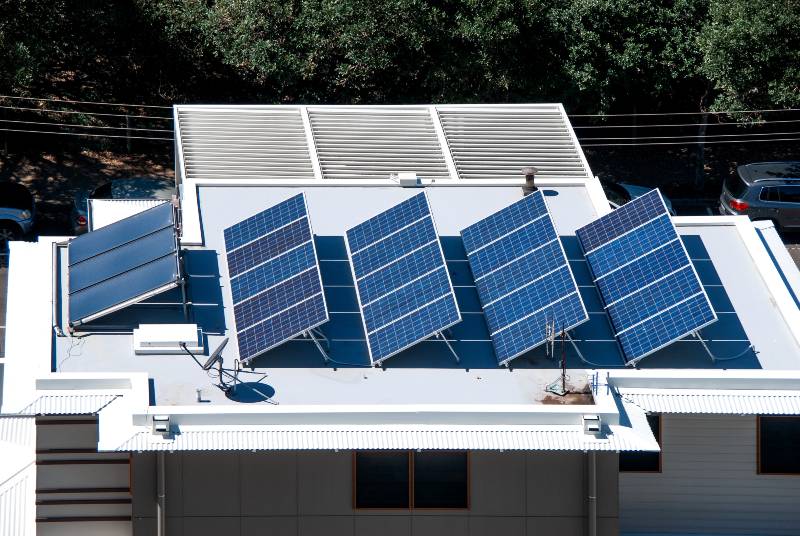
Solar Panels For Tiny Home FAQs
Can solar panels provide enough energy for all the needs of a tiny home?
Yes, with the right setup and planning, solar panels can provide enough energy for a tiny home. While the exact size of your system depends on your individual needs and lifestyle, by considering factors such as power output, system design, portability, durability, warranty options, and local climate you can find the best solution for powering your home.
What are the different types of solar panels suitable for tiny homes?
Tube-type solar panels are a popular option for tiny homes due to their lightweight, portable design and high efficiency. They are mounted on the roof of your home and can be adjusted to capture more sunlight throughout the day. Monocrystalline and polycrystalline solar panels are also suitable for tiny homes and offer good power output with minimal space requirements.
What are the main considerations when installing solar panels in tiny homes?
When installing a solar panel system for a tiny home, there are several key considerations to keep in mind. First, you’ll need to determine how much power your home needs and evaluate the amount of sunlight it receives. You also need to consider the size and type of panels that best meet your needs, as well as the installation costs and maintenance requirements.
How much maintenance is required for solar panels in tiny homes?
Solar panels are generally low maintenance, but regular cleaning and monitoring can help ensure optimal performance. Cleaning your panels once or twice a year with a garden hose is usually sufficient, but if the debris is stubborn you may need to hire a professional cleaner.
What is the average lifespan of solar panels in tiny homes?
The average lifespan of solar panels in tiny homes is around 25 years with regular maintenance. However, some panels can last up to 35 years or more if properly maintained. Additionally, many solar panel companies offer warranties and guarantees on their products, so be sure to research your options when selecting a system for your home.
How Many Panels for tiny houses do Need To Power it?
Tiny houses use around four kilowatts of power per day, making them a good fit for solar power systems. Heating and cooling are major factors in energy consumption in these small homes. Typically, six solar panels are needed for a tiny house to operate effectively.
Conclusion
By utilizing solar panels as the power source for your tiny home, you are making a small but important contribution to reducing our overall carbon footprint and energy consumption. Solar-powered tiny homes can represent an amazing cost-saving investment over time with the potential financial benefits and energy savings outweighing initial costs.
Even if you’re only able to make immediate investments in the basic equipment of a tiny home, be sure that when investing funds into your residence, you take every opportunity to invest in sustainable solutions. To learn more about how you can prioritize sustainability for your tiny home setup or gain more insights into repurposing electrical usage for living space efficiency, consider signing up for our newsletter. We’ll deliver all the news and insights on how best to utilize tiny homes for optimal sustainability and financial savings right to your inbox!
